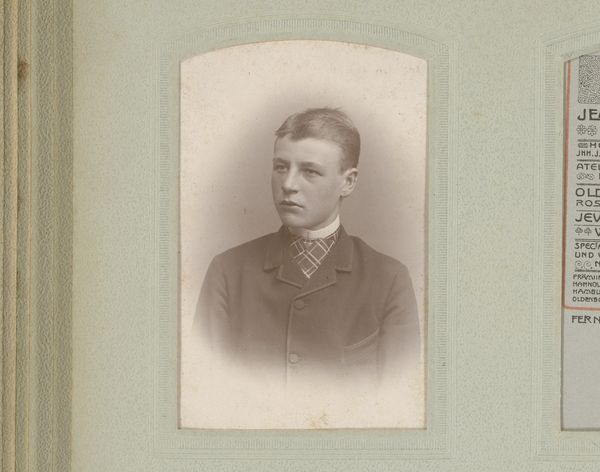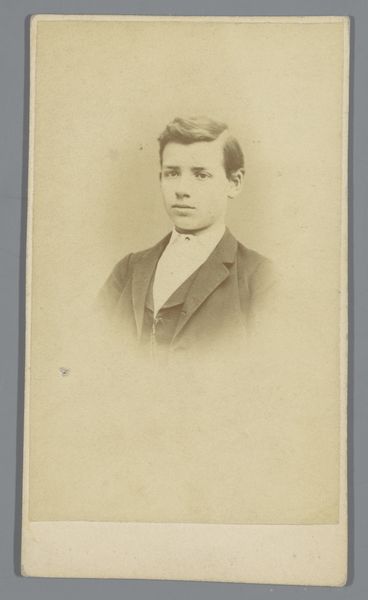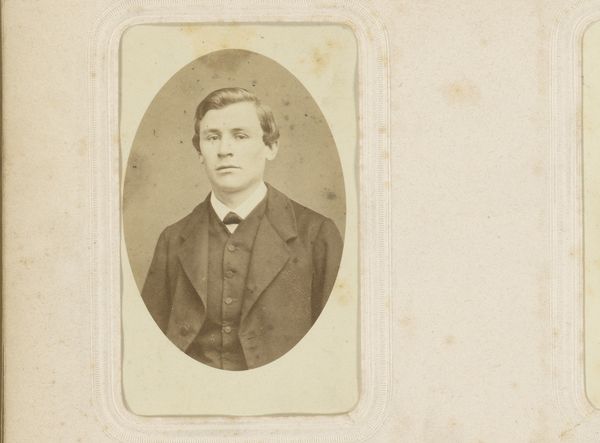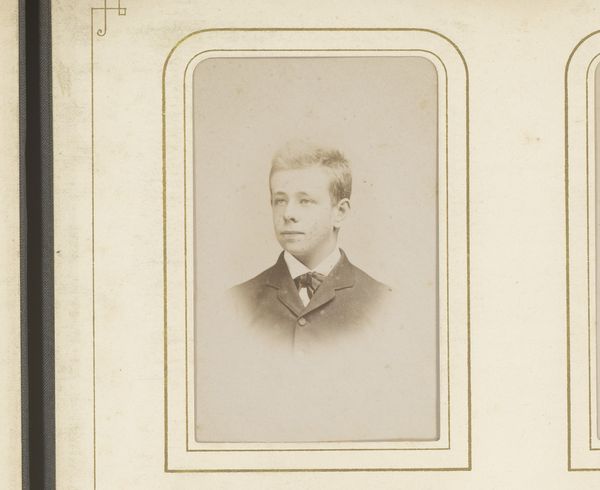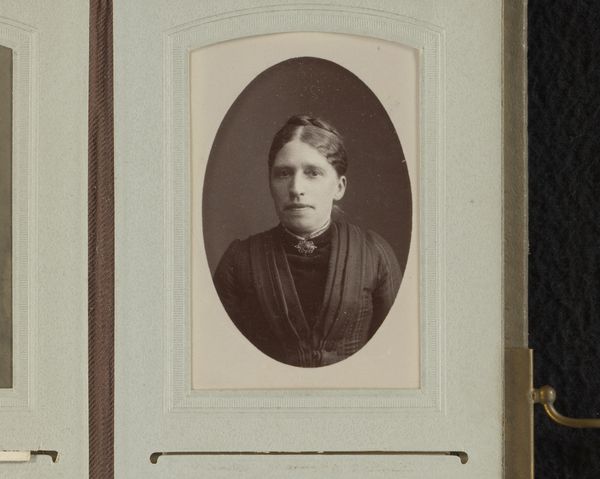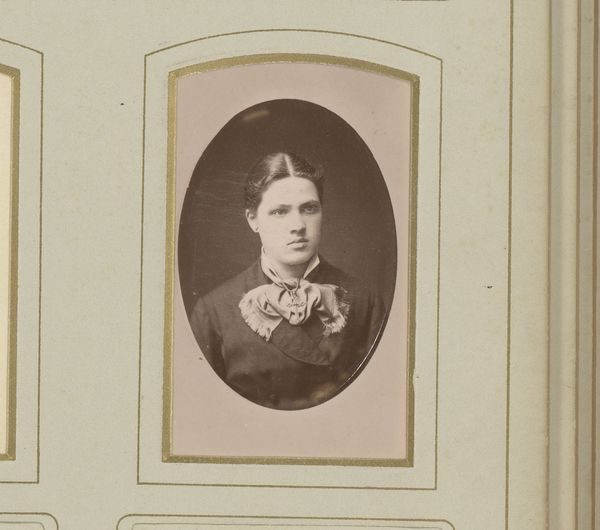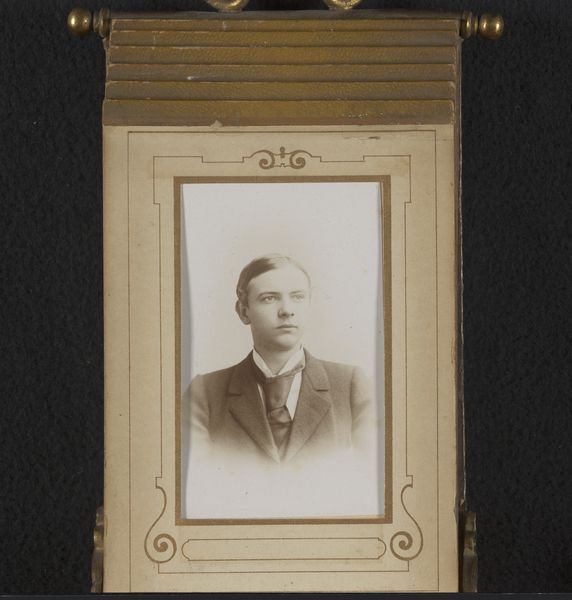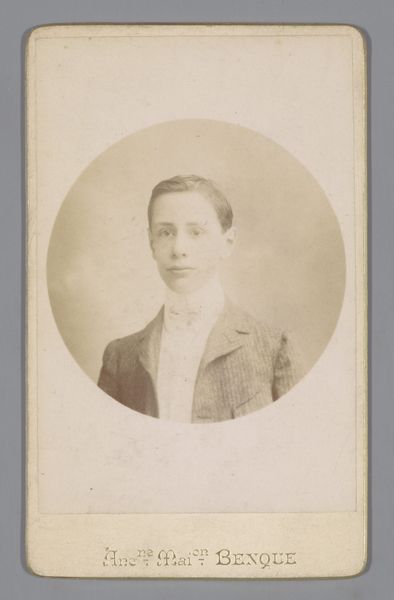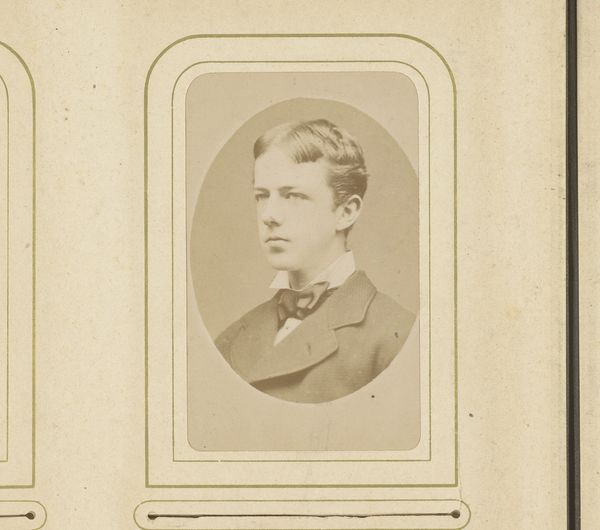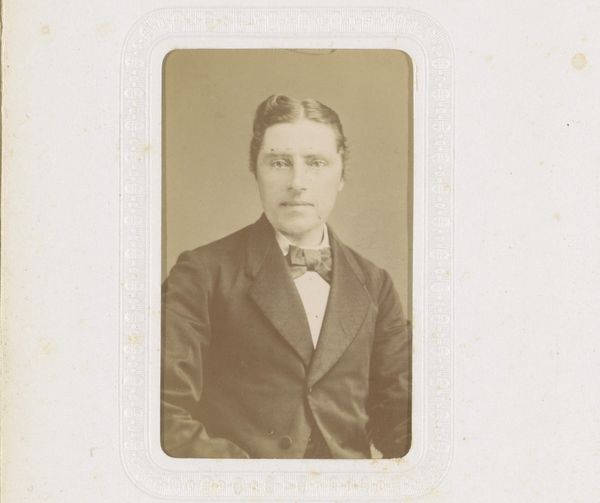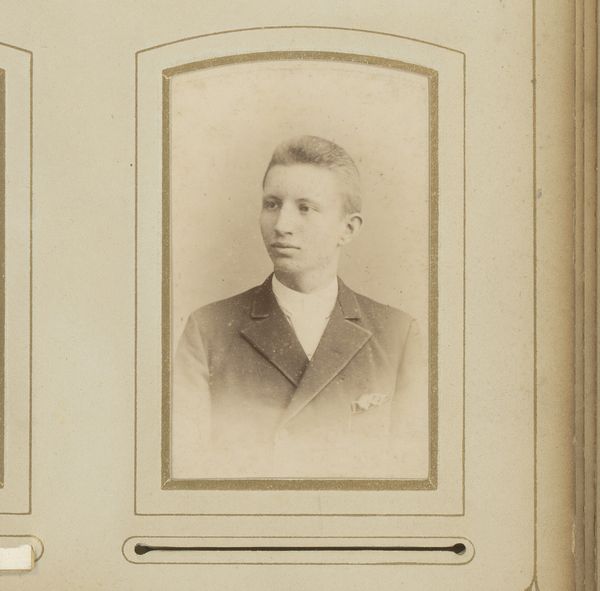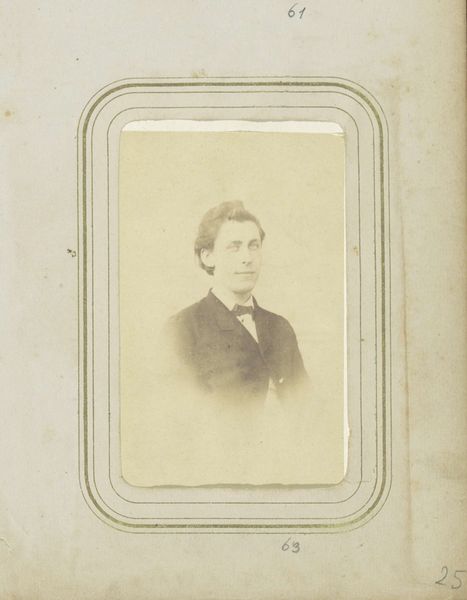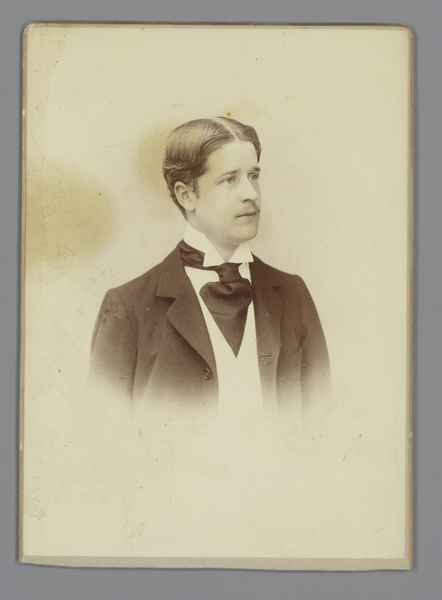
photography
#
portrait
#
photography
#
realism
Dimensions: height 84 mm, width 54 mm
Copyright: Rijks Museum: Open Domain
Curator: There’s a somber air to this photographic portrait of a young man. Editor: Yes, a quiet melancholy settles over the image. It feels intimate, despite its formal nature. What can you tell us about it? Curator: This is "Portret van een jonge man," or "Portrait of a Young Man," taken between 1890 and 1910 by Machiel Hendricus Laddé. We're fortunate to have it here at the Rijksmuseum. Editor: I’m immediately struck by the stark materiality of this piece— the surface imperfections and mottled tonality of the photograph tell their own story. These aren’t pristine digital pixels, but the visible results of a physical, chemical process. Curator: And that process carries its own cultural weight. Think of the photographic portrait in this era as a marker of social identity and aspiration. It's an effort to fix a specific image of oneself, projecting a controlled presentation of status. The young man’s tailored suit, his carefully arranged hair – they’re all elements of deliberate image-making. Editor: Absolutely. And looking at the photographic process itself – the specialized equipment, the chemicals involved, the labor in the darkroom – these elements all contributed to a selective social function. It represents the democratization of portraiture that was exclusive before that period. The materiality isn't just aesthetic; it embodies the social conditions of production. Curator: Precisely. And consider his gaze—direct but not defiant, perhaps slightly apprehensive. Does it hint at anxieties about societal expectations, about stepping into his expected role? The photograph preserves a fleeting moment and a broader sense of societal tension. Editor: Fascinating how this photograph operates as both an individual and social document, reflecting individual affect and material social systems. It’s more than just a face; it is the trace of a technology and its ability to mediate selfhood at a certain time. Curator: A window into the complex dance between personal identity and the ever-present shaping hand of society. Editor: Indeed, leaving us pondering the complex interaction between the person portrayed, the material and means of its production, and the socio-historic context that allows for it all.
Comments
No comments
Be the first to comment and join the conversation on the ultimate creative platform.
